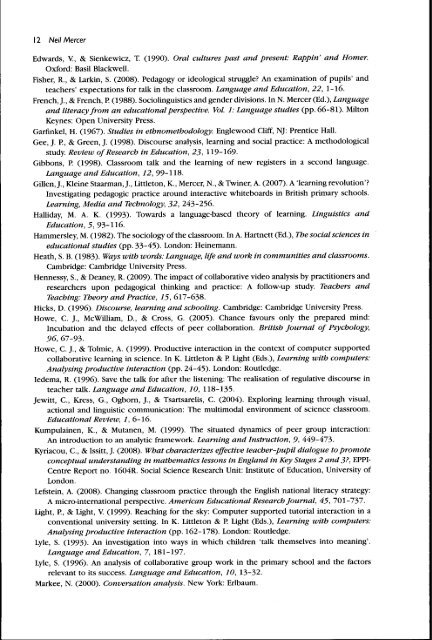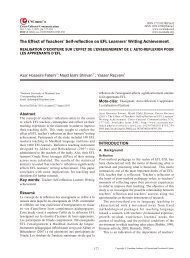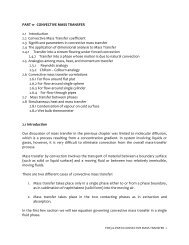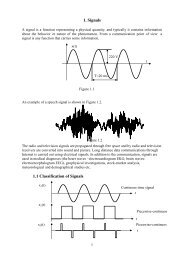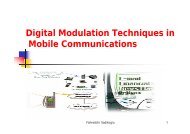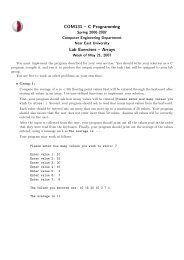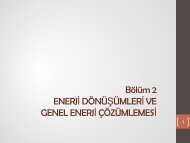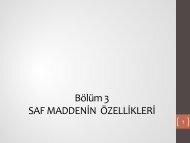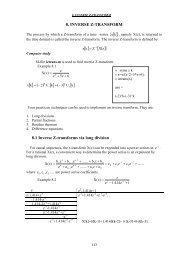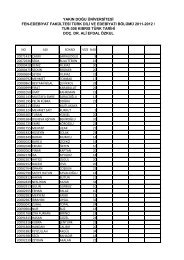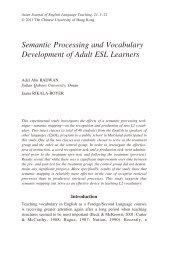(2010). The analysis of classroom talk: Methods and methodologies ...
(2010). The analysis of classroom talk: Methods and methodologies ...
(2010). The analysis of classroom talk: Methods and methodologies ...
Create successful ePaper yourself
Turn your PDF publications into a flip-book with our unique Google optimized e-Paper software.
12 Neil MercerEdwards, V., & Sienkewicz, T. (1990). Oral cultures past <strong>and</strong> present: Rappin' <strong>and</strong> Homer.Oxford: Basil Biackwell.Fisher, R., & Larkin, S. (2008). Pedagogy or ideologicai struggle? An examination <strong>of</strong> pupils' <strong>and</strong>teachers' expectations for taik in the <strong>classroom</strong>. Language <strong>and</strong> Education, 22, 1-16.French, J., & French, P. (1988). Sociolinguistics <strong>and</strong> gender divisions. In N. Mercer (Ed.), Language<strong>and</strong> literacy from an educational perspective. Vol 1: Language studies (pp. 66-81). MiltonKeynes: Open University Press.Garfinkel, H. (1967). Studies in ethnomethodology. Englewood Cliff, NJ: Prentice Hall.Gee, J. P., & Green, J. (1998). Discourse <strong>analysis</strong>, learning <strong>and</strong> social practice: A methodologicalstudy. Review <strong>of</strong> Research in Education, 23, 119-169.Gibbons, P (1998). Classroom <strong>talk</strong> <strong>and</strong> the learning <strong>of</strong> new registers in a second language.Language <strong>and</strong> Education, 12, 99-118.Gillen, J., Kleine Staarman, J., Littleton, K., Mercer, N., & Twiner, A. (2007). A 'learning revolution'?Investigating pedagogic practice around interactive whiteboards in British primary schools.Learning, Media <strong>and</strong> Technology, 32, 243-256.Halliday, M. A. K. (1993). Towards a language-based theory <strong>of</strong> learning. Linguistics <strong>and</strong>Education, 5, 93-116.Hammersley, M. (1982). <strong>The</strong> sociology <strong>of</strong> the <strong>classroom</strong>. In A. Hartnett (Ed.), <strong>The</strong> social sciences ineducational studies (pp. 33-45). London: Heinemann.Heath, S. B. (1983). Ways with words: Language, life <strong>and</strong> work in communities <strong>and</strong> <strong>classroom</strong>s.Cambridge: Cambridge University Press.Hennessy, S., & Deaney, R. (2009). <strong>The</strong> impact <strong>of</strong> collaborative video <strong>analysis</strong> by practitioners <strong>and</strong>researchers upon pedagogical thinking <strong>and</strong> practice: A follow-up study. Teachers <strong>and</strong>Teaching: <strong>The</strong>ory <strong>and</strong> Practice, 15, 617-638.Hicks, D. (1996). Discourse, learning <strong>and</strong> schooling. Cambridge: Cambridge University Press.Howe, C. J., McWilliam, D., & Cross, G. (2005). Chance favours only the prepared mind:Incubation <strong>and</strong> the delayed effects <strong>of</strong> peer collaboration. British Journal <strong>of</strong> Psychology,96, 67-93.Howe, G. J., & Tolmie, A. (1999). Productive interaction in the context <strong>of</strong> computer supportedcollaborative learning in science. In K. Littleton & P Light (Eds.), Learning with computers:Analysing productive interaction (pp. 24-45). London: Routledge.Iedema, R. (1996). Save the <strong>talk</strong> for after the listening: <strong>The</strong> realisation <strong>of</strong> regulative discourse inteacher <strong>talk</strong>. Language <strong>and</strong> Education, 10, 118-135.Jewitt, G., Kress, G., Ogborn, J., & Tsartsarelis, G. (2004). Exploring learning through visual,actional <strong>and</strong> linguistic communication: <strong>The</strong> multimodal environment <strong>of</strong> science <strong>classroom</strong>.Educational Review, 1, 6-16.Kumpulainen, K., & Mutanen, M. (1999). <strong>The</strong> situated dynamics <strong>of</strong> peer group interaction:An introduction to an analytic framework. Learning <strong>and</strong> Instruction, 9, 449-473.Kyriacou, G., & Issitt, J. (2008). What characterizes effective teacher-pupil dialogue to promoteconceptuai underst<strong>and</strong>ing in mathematics lessons in Engl<strong>and</strong> in Key Stages 2 <strong>and</strong> 3?, HPPI-Gentre Report no. 16O4R. Social Science Research Unit: Institute <strong>of</strong> Education, University <strong>of</strong>London.Lefstein, A. (2008). Ghanging <strong>classroom</strong> practice through the English national literacy strategy:A micro-international perspective. American Educational Research Journal, 45, IQl-Til.Light, P., & Light, V. (1999). Reaching for the sky: Gomputer supported tutorial interaction in aconventional university setting. In K. Littleton & P. Light (Eds.), Learning with computers:Anaiysingproductive interaction (pp. 162-178). London: Routledge.Lyle, S. (1993). An investigation into ways in which children '<strong>talk</strong> themselves into meaning'.Language <strong>and</strong> Education, 7, 181-197.Lyle, S. (1996). An <strong>analysis</strong> <strong>of</strong> collaborative group work in the primary school <strong>and</strong> the factorsrelevant to its success. Language <strong>and</strong> Education, 10, 13-32.Markee, N. (2000). Conversation <strong>analysis</strong>. New York: Erlbaum.


